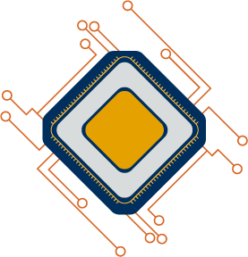This decision concerns the patentability of the classification of text documents. In this context, the Board clarifies whether the determination of claim features contributing to the technical character is made without reference to the prior art.
Object of the Invention:
- the invention is concerned with the computerized classification of text documents
- this is done by first building a “classification model” and then classifying documents using this classification model
Board I (sufficiency of disclosure):
- the application does not explain several techniques in detail, and claim 1 does not specify any measure being taken to ensure linear separability
- it may therefore be questioned whether the application is sufficiently disclosed over the whole scope claimed
- however, the Board considers that this issue does not prevent it from examining for the presence of an inventive step
- given the outcome of this examination the question of sufficiency of disclosure need not be answered
Board II (inventive step):
- claim 1 defines a method for classifying text documents essentially in terms of an abstract mathematical algorithm
- a mathematical algorithm contributes to the technical character of a computer-implemented method only in so far as it serves a technical purpose (T 1784/06)
- in the present case, the algorithm serves the general purpose of classifying text documents
- classification of text documents is certainly useful, as it may help to locate text documents with a relevant cognitive content, but does not qualify as a technical purpose
- whether two text documents in respect of their textual content belong to the same “class” of documents is not a technical issue
- the same position was taken in T 1316/09 which held that methods of text classification per se did not produce a relevant technical effect or provide a technical solution to any technical problem
Appellant I (inventive step):
- the claimed invention could not be seen as the straightforward implementation of something which had been done manually before
- when manually classifying a text document, a human being would read it through and assign a particular class to it on the basis of his understanding of the document
- as was known from the domain of cognitive psychology, he would not consider all of the words in the document; words near its beginning would often already provide a clear indication of its semantic topic
- the claimed automatic classification method on the other hand involved precise computation steps which no human being would ever perform when classifying documents
- the claimed computerised method was highly efficient, in particular in comparison to classification methods disclosed in documents cited in the international search report
Board III (inventive step):
- the Board agrees that a human being would not apply the claimed classification method to perform the task of classifying text documents
- the Board accepts that the proposed computerised method may be faster than classification methods known from the prior art
- however, the determination of the claim features which contribute to the technical character of the invention is made, at least in principle, without reference to the prior art (T 154/04)
- it follows that a comparison with what a human being would do or with what is known from the prior art is not a suitable basis for distinguishing between technical and non-technical steps (T 1954/08)
Board IV (inventive step):
- nevertheless, not all efficiency aspects of an algorithm are by definition without relevance for the question of whether the algorithm provides a technical contribution
- if an algorithm is particularly suitable for being performed on a computer in that its design was motivated by technical considerations of the internal functioning of the computer, it may arguably be considered to provide a technical contribution to the invention (T 258/03)
- however, such technical considerations must go beyond merely finding a computer algorithm to carry out some procedure (G 3/08)
- in the present case no such technical considerations are present
- the algorithm underlying the method of claim 1 does not go beyond a particular mathematical formulation of the task of classifying documents
- the aim of this formulation is clearly to enable a computer to carry out this task, but no further consideration of the internal functioning of a computer can be recognised
Appellant II (inventive step):
- the claimed method provided more reliable and objective results than manual classification, since it was independent of the human subjective understanding of the content of the documents
Board V (inventive step):
- the Board does not contest that the claimed classification method may provide reliable and objective results, but this is an inherent property of deterministic algorithms
- the mere fact that an algorithm leads to reproducible results does not imply that it makes a technical contribution
- since the mathematical algorithm does not contribute to the technical character of the claimed method, an inventive step can be present only in its technical implementation
- the technical implementation of the mathematical algorithm being obvious
- –> no inventive step
Information from the author: “technical purpose” is no longer sufficient according to decision G1/19 for non-technical features to make a technical contribution. According to current case law (as of August 2024), in such a case a further or intended or implied technical use is required.

